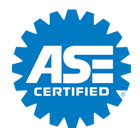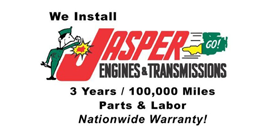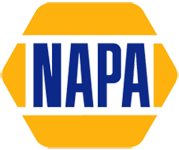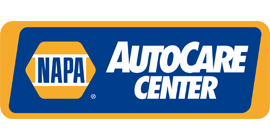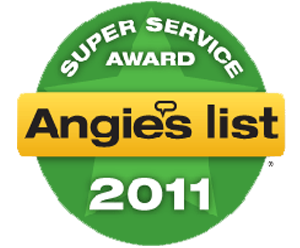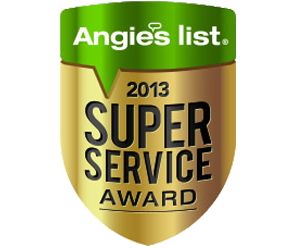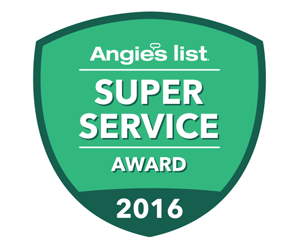AUTONET TV
Archive for September 2014Straight and True in Bloomington: Wheel AlignmentPosted September 23, 2014 10:00 AMMost Bloomington folks worry about running out of gas or having a breakdown on the side of the road. That is why we practice preventive maintenance on our vehicles — that and to keep our repair bills down. But one important part of preventive maintenance that may get overlooked by drivers in Bloomington is a periodic alignment inspection. AutoChoice Service Center Inc.
Drive Train Service in Bloomington at AutoChoice Service Center Inc.Posted September 18, 2014 3:00 AMThe drive train in your vehicle includes all the components that transfer power from the transmission to the wheels. Those components differ depending on what type of vehicle you drive, namely, front-wheel drive, rear-wheel drive, all-wheel drive or four-wheel drive. The preventive maintenance your driveshaft needs will also differ by what type of vehicle you drive. Shake It up in Bloomington!: Why Wheel BalancingPosted September 10, 2014 4:00 AMOur vehicles are not massage chairs. While we may enjoy a good vibration in an overstuffed recliner, we generally want as smooth a ride as possible in our vehicles. One way to achieve this is to keep a vehicle's wheels in balance. When a tire is mounted onto a wheel, it is usually out of balance. This means that as the wheel spins, there is a slight wobble to the path of the tire. For best handling performance and safety on the road, Bloomington drivers want to minimize this wobble as much as possible. So we balance our tires. To balance a tire, your technician at AutoChoice Service Center Inc. spins it on a machine or drum to determine where it is off-balance. He then attaches weights that counter-balance the uneven weight. Most people in Bloomington are surprised at how much balancing improves the smoothness of their ride. High-quality tires generally hold their balance well. But over time, wear and tear take their toll and tires can become unbalanced. Bloomington drivers can tell when a front tire is unbalanced if they feel a vibration in the steering wheel. If a back tire is unbalanced, you'll feel a vibration in your seat. You may not notice these vibrations until they get fairly serious — or until someone else drives your vehicle — because they usually develop slowly. If a vibration starts abruptly, it usually means you've lost a balancing weight. The average tire rotates at about 850 revolutions per minute at 60 mph/97 kmh. When a tire is out of balance, it actually hops down the road, rather than rolling. So at 60 mph/97 kph, it is slamming into the pavement 14 times a second. That's what creates the vibration. When tires are out of balance, they wear out more quickly. The lack of balance also causes extra wear on shocks, struts, steering components and suspension parts. Getting a balance job at AutoChoice Service Center Inc. in Bloomington can prevent repair bills and even an accident. It will improve the safety of your vehicle as well as its handling performance. When you change your rims or get a flat repaired at AutoChoice Service Center Inc., you'll need to get your tires balanced as well. When you rotate your tires, you may want to have them balanced, too. Some Bloomington vehicle owners, however, only balance their wheels every other rotation. You can check your owner's manual to see what is recommended for your vehicle. Balancing your tires is part of preventive maintenance. It keeps your vehicle in good repair and prevents damage to many of its components. So practice good vehicle care and make it a point to keep your tires balanced. It's quality auto advice from AutoChoice Service Center Inc.. Massage chairs may vibrate away our worries, but unbalanced tires will just rattle Bloomington drivers' nerves. AutoChoice Service Center Inc.
How Much is Enough for Bloomington Auto Owners? Tire Tread DepthPosted September 5, 2014 9:00 AMMost Bloomington drivers know that tires wear out and that the wear has to do with tread depth. Most of us have heard that “bald” tires are dangerous, but most of us picture a tire with no tread at all when we think of a bald tire. And when we take our vehicles in for preventive maintenance, the technician tells us they're need to be replaced long before all the tread is worn off. Just how much tire tread wear is too much? And how can you tell? Tires are and their condition is important to the safe handling of a vehicle, so it's for Bloomington vehicle owners to know the answers to these questions. AutoChoice Service Center Inc. | ||
SearchArchiveDecember 2009 (4)January 2010 (2) February 2010 (4) March 2010 (4) April 2010 (4) May 2010 (3) June 2010 (1) July 2010 (3) August 2010 (5) September 2010 (2) October 2010 (3) November 2010 (4) December 2010 (5) January 2011 (4) February 2011 (4) March 2011 (5) April 2011 (4) May 2011 (4) June 2011 (2) August 2011 (4) September 2011 (3) October 2011 (1) December 2011 (4) February 2012 (1) March 2012 (5) April 2012 (4) May 2012 (1) June 2012 (3) July 2012 (1) August 2012 (1) November 2012 (1) December 2012 (2) March 2013 (1) April 2013 (3) May 2013 (2) October 2013 (5) November 2013 (2) January 2014 (2) February 2014 (4) March 2014 (1) July 2014 (4) August 2014 (7) September 2014 (4) October 2014 (5) November 2014 (4) December 2014 (5) January 2015 (4) February 2015 (4) March 2015 (4) April 2015 (4) May 2015 (2) June 2015 (6) July 2015 (2) September 2015 (3) October 2015 (3) November 2015 (5) December 2015 (1) March 2016 (5) April 2016 (4) May 2016 (5) June 2016 (4) July 2016 (4) August 2016 (5) September 2016 (4) October 2016 (5) November 2016 (4) December 2016 (4) January 2017 (5) February 2017 (4) March 2017 (4) April 2017 (4) May 2017 (5) June 2017 (4) July 2017 (5) August 2017 (3) September 2017 (3) October 2017 (5) November 2017 (4) December 2017 (3) January 2018 (5) February 2018 (4) March 2018 (4) April 2018 (5) May 2018 (4) June 2018 (4) July 2018 (5) August 2018 (4) September 2018 (5) October 2018 (4) November 2018 (4) December 2018 (5) January 2019 (5) February 2019 (4) March 2019 (5) April 2019 (4) May 2019 (4) June 2019 (5) July 2019 (4) August 2019 (4) September 2019 (5) October 2019 (4) November 2019 (4) December 2019 (5) January 2020 (5) February 2020 (4) March 2020 (5) April 2020 (4) May 2020 (5) June 2020 (4) July 2020 (3) August 2020 (5) September 2020 (4) October 2020 (4) November 2020 (5) December 2020 (4) January 2021 (6) February 2021 (4) March 2021 (4) April 2021 (4) May 2021 (5) June 2021 (4) July 2021 (4) August 2021 (5) September 2021 (4) October 2021 (5) November 2021 (4) December 2021 (4) January 2022 (6) February 2022 (4) March 2022 (4) April 2022 (4) May 2022 (5) June 2022 (4) July 2022 (5) August 2022 (4) September 2022 (4) October 2022 (5) November 2022 (4) December 2022 (4) January 2023 (5) February 2023 (4) March 2023 (4) April 2023 (5) May 2023 (4) June 2023 (4) July 2023 (5) August 2023 (4) September 2023 (3) October 2023 (1) January 2024 (1) February 2024 (4) | CategoriesParts (7)Automotive News (8)Service Standards (12)Maintenance (52)Fuel System (46)Transmission (11)Tires and Wheels (40)Monitoring System (3)Dashboard (3)Steering (14)Battery (20)Service Intervals (9)Brakes (22)Cabin Air Filter (8)Drive Train (9)Fluids (16)Shocks & Struts (9)Inspection (10)Headlamps (6)Timing Belt (6)Windshield Wipers (9)Check Engine Light (6)Alignment (16)Cooling System (19)Air Conditioning (17)Safety (6)Differential Service (3)Diagnostics (5)Fuel Economy (10)Engine Air Filter (2)Exhaust (12)Keys to a long lasting vehicle (4)Diesel Maintenance (1)Suspension (3)Serpentine Belt (6)Older Vehicles (4)Emergency Items (1)Alternator (6)Winter Prep (7)Fuel Saving Tip: Slow Down (2)Auto Safety (6)Trip Inspection (4)What Customers Should Know (81)Warranty (1)Tire Rotation and Balancing (3)Wheel Bearings (1)Oil Change (7)Safe Driving (1)Customer Detective Work (1)Tires (10)Spark Plugs (2)Water Pump (1)Winter Tires (1)TPMS (3)Transfer Case Service (1)PCV Valve (2)Brake Service (4)Fuel Pump (1)Shocks and Struts (1) | |
Reviews
|
I had my car in a while back for brake work and once again I was extremely pleased with Auto Choice. They are professional and honest (a rare combination) and I know that the work will be done correctly. I drive a Subaru and I completely trust my technician Jake to diagnose and expertly correct any issues that come up. I definitely will be back the next time I need anything car related. Thank you Jake and Auto Choice! Cathy Kinsman, 04/17/2024 |
|
|




